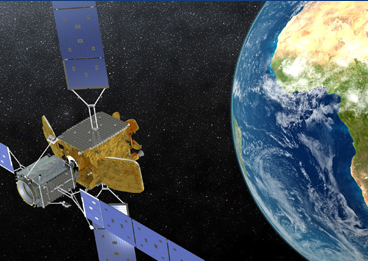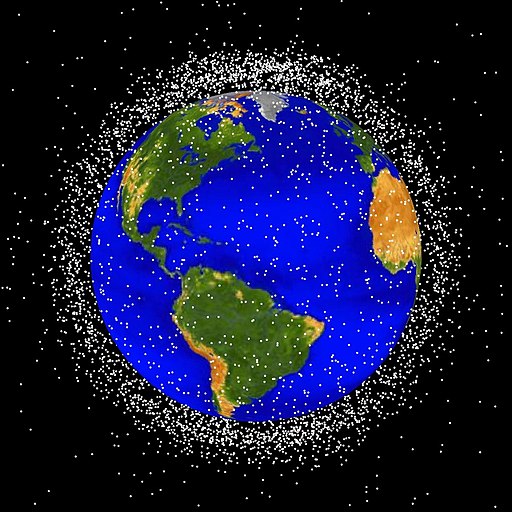
62 years after the launch of Sputnik, the Earth’s orbit is congested. Defective satellites, space rocket stages and space debris of all kinds are piling up at all altitudes, representing a risk of collision that increases each year. There has already been a spectacular accident between satellites in 2009. Iridium-33 and Kosmos-2251 have thus annihilated each other in a shock that occured at a 42,000 km/h speed. The accident created new clouds of space debris that in turn increases the risk of collision. Of course, the deployment of satellite mega-constellations will aggravate this issue.
Before the low orbit becomes a “No Man’s Land”, it is therefore urgent to find solutions. That’s why the MEV satellite was launched on October 9th. It is a space tug designed by a subsidiary of Northrop-Grumman. MEV will dock with the Intelsat 901 satellite, which is nearing the end of its life. It will raise its orbit, thus extending the life of Intelsat 901 by 5 years. The space tug has substantial reserves of fuel. It will then be able to raise the orbit of other satellites. MEV should be able to operate for about fifteen years, and according to its designers it is able to offer its services to 80% of satellites in geostationary orbit.
This approach does not directly reduce the number of space debris in Earth orbit, but it has the advantage of limiting their increase. Rather than launching new satellites, we are trying to extend the mission of satellites that are already in orbit. This method is particularly interesting for the geostationary orbit, which is too high for atmospheric deorbitation to be possible. It seems more reasonable to send space tugs into space to extend the life of existing satellites and eventually bring them into parking orbits.
For low orbits, however, a different solution can be considered. Deorbiting space debris is complicated and expensive, and that is probably why so far most players of the space industry have not dealt with this problem. However, several private companies wish to change things. In 2020, Astroscale will launch the ELSA-d mission, a demonstration consisting of a space tug and a target satellite. The start-up has already raised $140 million. If this first mission is a success, Astroscale will quickly offer a commercial service.
In Europe, ClearSpace, a Swiss company, has the same ambition. It has been chosen by ESA to work on the disorientation of space debris caused by the European Space Agency. ClearSpace could receive funds from member states at the interministerial conference in Seville next month. This would pave the way for a first mission in 2025. ClearSpace-1 would deorbit a payload support belonging to a Vega launcher.
But for the active deorbitation of space debris to become a real commercial activity, it will probably be necessary to wait for legislative pressure. Technology is already ready. It may be thought that an obligation to clean up its space debris could force most companies to utilize its services with ultimately a rapid decline in the cost of deorbiting and a long-term cleanup of the low orbit. The question will become more and more central as OneWeb, SpaceX and Amazon deploy their satellite mega-constellations.

A space tug for the Orion spaceship and the LOP-G ?
– News of September 29, 2019 –
The concept of space tug exists since the 1960s, and perhaps even before. The idea is to design a space vehicle whose function would be to transport cargo from one orbit to another. We can imagine many different flight scenarios, for example from low orbit to geostationary orbit, or more ambitiously from low Earth orbit to low lunar orbit. Many third rocket stages can be considered as space tugs. We can imagine putting the LOP-G into lunar orbit by not using the SLS and using space tugs.
Two commercial launchers take off, one of them embarks the Orion spaceship and a module of the LOP-G, the other embarks a space tug. They meet in Earth orbit before the space tug propels them towards the Moon. But for a space tug to be really interesting, it is preferable that it is reusable, which implies that it can be refueled propellant. This is for example a space vehicle capable of going alone from the low orbit to the Moon, to come back and wait for a new cargo and a refueling. By pushing the concept even further, the ideal space tug should be able to refuel near the Moon, which would greatly increase its capabilities.
Image by orbitalatk.com









